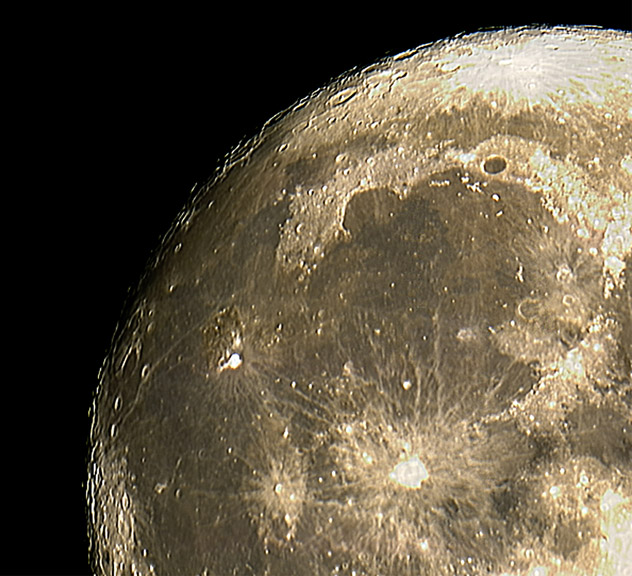
image by Steve Boint, Sioux Falls, SD
Any image may reveal features that were previously overlooked. Steve writes: For this image, I pushed the contrast on the Toucam as high as I could and set the color balance to slightly red which brought out the differrences in the maria nicely. I was surprised by a ray I hadn’t noticed before, ending just north of Timocharis, passing north of Aristarchus, and disappearing into the terminator. Could this be a ray from Rontgen or Lorentz? The colors also nicely revealed the difference in composition between the area just west of Sinus Roris and the rest of Procellarum. CAW: At first I thought Steve’s ray might be ray splotches from Copernicus that our eyes connect as a line, but the feature appears to have longitudinal continuity. The ray bends at the northern tip of the Aristarchus Plateau - I am not sure if the same ray continues westward or if that is an unrelated feature. Note also that a few broad rays that cross Sinus Iridum appear to stop abruptly where they reach the younger, dark mare material in northern Imbrium. If so, that bright material is older than about 2.7 billion years. This image reminds us that rays are probably the least studied type of feature on the Moon - even thought they are in plain view!
Chuck Wood & Steve Boint
Technical Details:
31 May, 2007 at 00:00 to 00:27 UT using a 10 inch Newtonian, f4.5, a 2x Barlow, and a Philips Toucam Pro II. Mosaic of 20 images (Photoshop) each made from stacking 200 frames (Registax). The observation site had an elevation of 434.64m. Longitude was 96.73133 and latitude 43.52933.
Related Links:
Rükl chart: many!
COMMENTS?
Click on this icon File:PostIcon.jpg at the upper right to post a comment.



